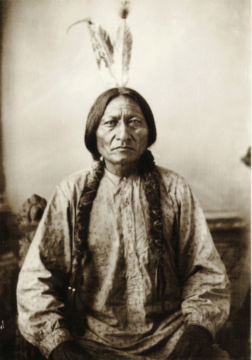by Mark Harvey
I would go home to eat, but I could not make myself eat much; and my father and mother thought that I was sick yet; but I was not. I was only homesick for the place where I had been. –Black Elk

According to Lakota Indians, in early June of 1876, the great tribal chief Sitting Bull performed a sun dance in which he cut 100 pieces of flesh from his arms as an offering to his creator and then danced for a day and a half. He danced until he was exhausted from the dancing and the loss of blood and then fell into a vision of the coming battle with General George Custer at Little Big Horn. Moved by his vision, thousands of Cheyenne, Lakota, and Arapahoe warriors attacked Custer’s 7th Cavalry Regiment on June 25th, 1876, and overwhelmingly defeated it in what is today southeastern Montana. In the battle, Custer, two of his brothers, and a nephew were killed along with 265 other soldiers.
The battle was inevitable. The Bureau of Indian Affairs had insisted that the Lakota remove to a reservation by January 31, 1876, to accommodate white miners and settlers in the area. The Indians hated the idea of living on a reservation and giving up their life of hunting on the great plains so they refused to move to the reservation. Custer was sent by General Alfred Terry to pursue Sitting Bull’s people from the south and push them north to what would be a sort of ambush. But the brash young Custer far underestimated the number of Indians gathered near the Powder River and also their ferocious resolve to fight his regiment. Read more »
